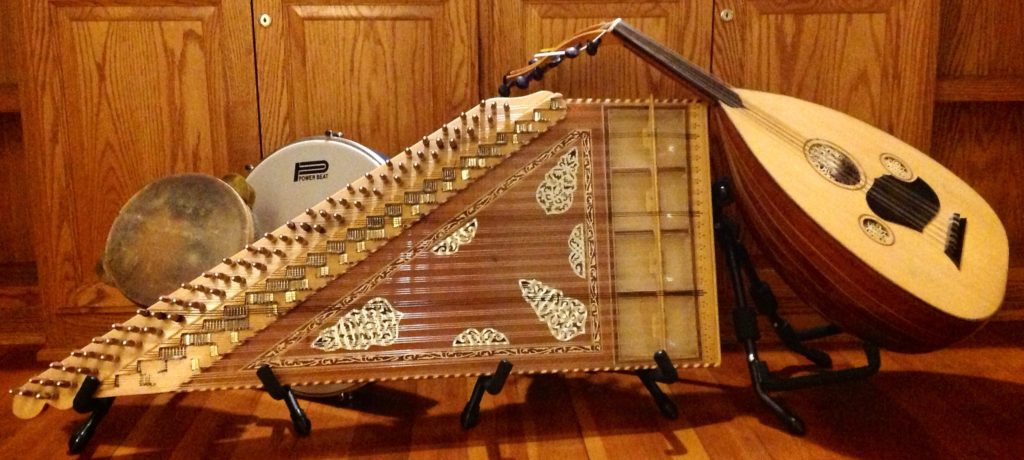The music prevalent across our region is unlike any other across the globe. The people of the Arab World have incorporated a number of unique sounding instruments and developed a myriad of rhythms that constituted what would become one of the greatest, most-diverse musical genres in the world.
From the oud to the riqq, these oriental instruments have shaped our understanding of music as a people, and went on to be a part of many musical pieces all over the world. To celebrate the musical artistry of the Arab world, we’ve picked out the most prominent Middle Eastern musical instruments of all time.
Oud
Perhaps the most renowned of all Middle Eastern musical instruments, the oud is a fretless lute that has been a major component of every classical piece of Arabic music. Its name in Arabic is directly translated into ‘a strip of wood’, referring to its pear-shaped exterior and short neck.
The question of whether the oud originated in Persia or ancient Egypt is still a matter of heated debate. Evidence suggests that the same instrument originated in both locations in parallel around 3,500 years ago. Following that timeline, the Arabs of the peninsula came across the oud in Persia, which was called Barbat at the time, and they adopted it into their own culture and called it the oud.
Qanun
The qanun is a trapezoid-shaped flat board made of wood that carries 81 strings stretched in groups of threes. The first evidence of what might resemble the qanun was found in ancient Egypt and it was called the Egyptian harp.
Since the 10th Century C.E., it has found its way into Arabian culture and become a staple of Arabic music. The word qanun in Arabic means law, also in English it is known as ‘canon’. It was called this because the qanun lays down the law of pitch to singers and other instruments.
Ney
With evidence of its popularity throughout different ages, the ney is the oldest musical instrument still in use today. It first originated in Persia around 5,000 years ago, although there was an ancient Egyptian counterpart.
It is an end-blown flute composed of a giant reed with five or six fingerholes. It comes in different lengths, each tuned to a specific pitch. Despite its simple appearance, the ney is one of the most difficult musical instruments to play. A proficient player can produce a variety of sounds that go well with Arabic music.
Riqq
The riqq is a small handheld drum that is framed with jingles. This frame is often made of wood, while the body is traditionally fitted with fish skin. Nowadays, however, manufacturers prefer to use plastic.
The instrument has been a staple of Arabic as well as folk music throughout the entire region. It is renowned for its ability to produce complex percussive cycles in a wide variety of sounds. The player of the riqq in traditional Arabic is known as the takht group “dabit al-eiqa”, or the one who controls the rhythm.
Sagat
Often called zills in Turkish, or sagat in Arabic, these finger cymbals are very popular in traditional belly dancing. They first came to be as part of Ottoman military bands and then spread throughout the Middle East. These instruments add a cheerful tinge to other percussion instruments.
Tabl Baladi
Perhaps one of the most prominent Arabic musical instruments of all time, the tabl baladi is a large drum that utilizes a player’s hands to create a beat. It has two sounds, a dum sound played by the dominant hand and a tak sound played with the other one. It is a very popular element of folk music in villages throughout the Middle East, especially Egypt and Syria.
By learning about these musical instruments that are interlaced in Arab culture and identity, you’ll get a unique glimpse at the region’s rich history and what makes it unique and prominent.



